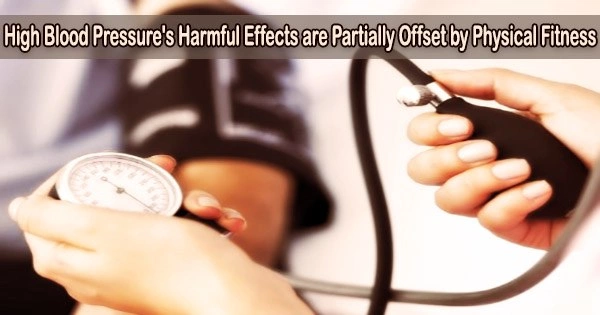According to a 29-year study published today in the European Journal of Preventive Cardiology, a journal of the ESC, men with high blood pressure who are physically fit may have a lower chance of dying from cardiovascular disease.
“This was the first study to evaluate the joint effects of fitness and blood pressure on the risk of dying from cardiovascular disease,” said study author Professor Jari Laukkanen of the University of Eastern Finland, Kuopio, Finland. “The results suggest that being fit helps protect against some of the negative effects of high blood pressure.”
Around 1.3 billion persons between the ages of 30 and 79 suffer from hypertension or high blood pressure. Globally, hypertension is one of the main causes of premature death and a significant risk factor for heart attacks and strokes.
High levels of cardiorespiratory fitness have been associated with longer lifespans, according to previous studies. This study looked at the relationship between blood pressure, fitness, and the risk of cardiovascular death.
The study included 2,280 men aged 42 to 61 years living in eastern Finland and enrolled in the Kuopio Ischaemic Heart Disease Risk Factor Study. Baseline measurements were conducted between 1984 and 1989. These included heart rate and cardiorespiratory fitness, which was measured by the amount of oxygen a rider could consume while stationary. Fitness levels were categorized as low, medium, or high, and blood pressure as normal or high.
Getting blood pressure under control should remain a goal in those with elevated levels. Our study indicates that men with high blood pressure should also aim to improve their fitness levels with regular physical activity. In addition to habitual exercise, avoiding excess body weight may enhance fitness.
Professor Jari Laukkanen
The average age at baseline was 53 years. Participants were followed up until 2018. During a median follow up of 29 years, there were 644 deaths due to cardiovascular disease. Age, body mass index, cholesterol levels, smoking status, type 2 diabetes, coronary heart disease, use of antihypertensive medications, alcohol consumption, physical activity, socioeconomic status, and high sensitivity C-reactive protein (a marker of inflammation) were all taken into account when analyzing the risk of death from cardiovascular disease.
Considering blood pressure alone, compared to normal values, high blood pressure was associated with a 39% increased risk of cardiovascular mortality (hazard ratio (HR) 1.39; 95% confidence interval (CI) 1.17-1.63). Considering fitness alone, compared with high levels, low fitness was associated with a 74% elevated likelihood of cardiovascular death (HR 1.74; 95% CI 1.35-2.23).
Participants were divided into four groups to investigate the joint correlations between blood pressure and fitness and risk of cardiovascular death. 1) a reference group with high fitness levels and normal blood pressure; 2) Low fitness and normal blood pressure; 3) High fitness and high blood pressure; 4) High blood pressure and low fitness.
Compared to men with normal blood pressure and high fitness (HR 2.35; 95% CI 1.81-3.04), those with high blood pressure and low fitness had a risk of dying from cardiovascular causes that was more than double.
When men with high blood pressure had high fitness levels, their elevated risk of cardiovascular risk persisted but was weaker: it was 55% higher than those with normal blood pressure and high fitness (HR 1.55; 95% CI 1.16-2.07).
Professor Laukkanen said: “Both high blood pressure and low fitness levels were each associated with an increased risk of cardiovascular death. High fitness levels attenuated, but did not eliminate, the increased risk of cardiovascular mortality in men with elevated blood pressure.”
The paper states: Due to the strong, independent, and causal link between blood pressure and cardiovascular disease, cardiorespiratory fitness cannot totally decrease the risk of cardiovascular mortality in people with high blood pressure.
Professor Laukkanen concluded: “Getting blood pressure under control should remain a goal in those with elevated levels. Our study indicates that men with high blood pressure should also aim to improve their fitness levels with regular physical activity. In addition to habitual exercise, avoiding excess body weight may enhance fitness.”
To lower all-cause death, cardiovascular death, and disease, ESC guidelines advise persons of all ages to aim for at least 150 to 300 minutes a week of moderate-intensity or 75 to 150 minutes a week of vigorous-intensity aerobic physical activity, or an equivalent mix.





